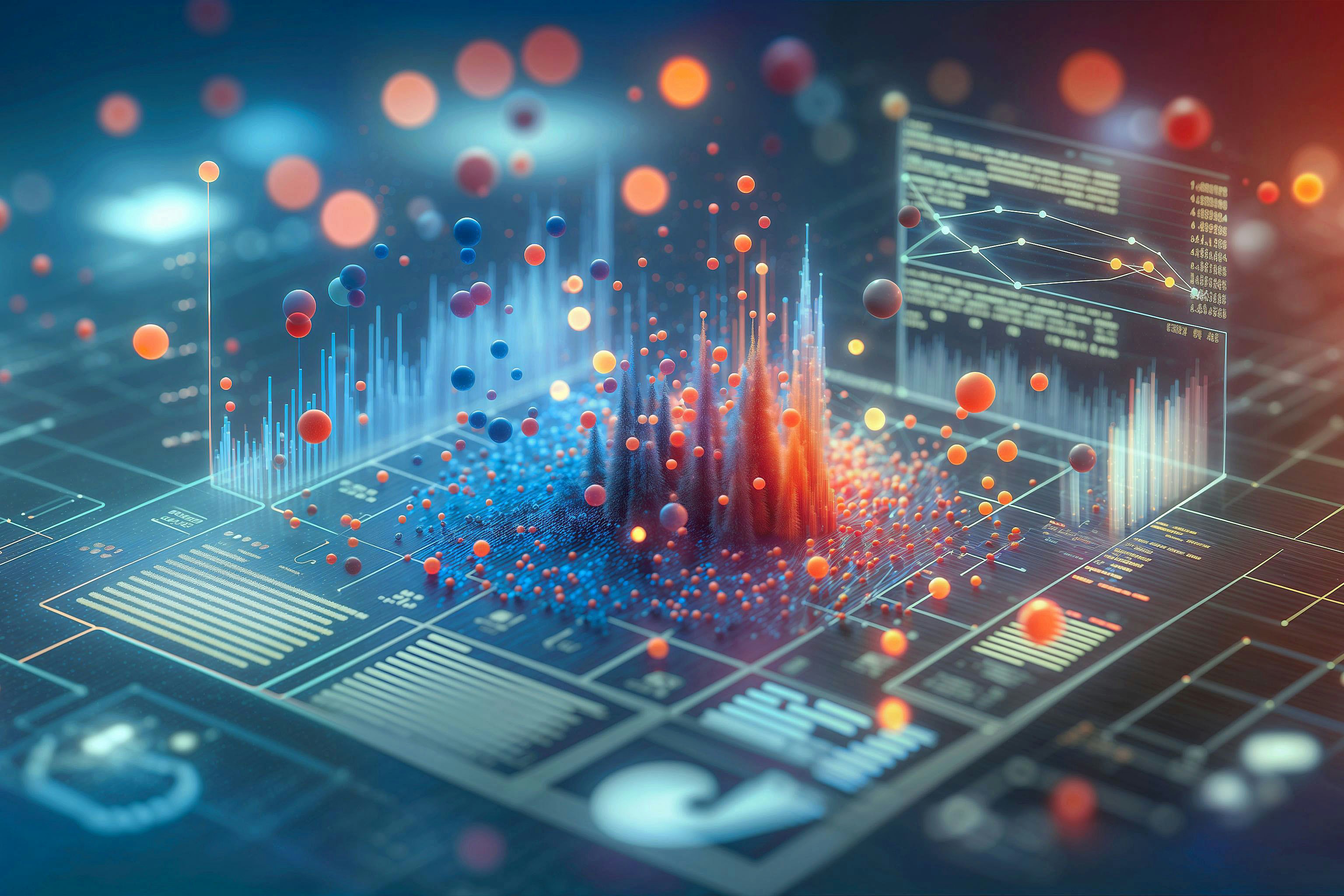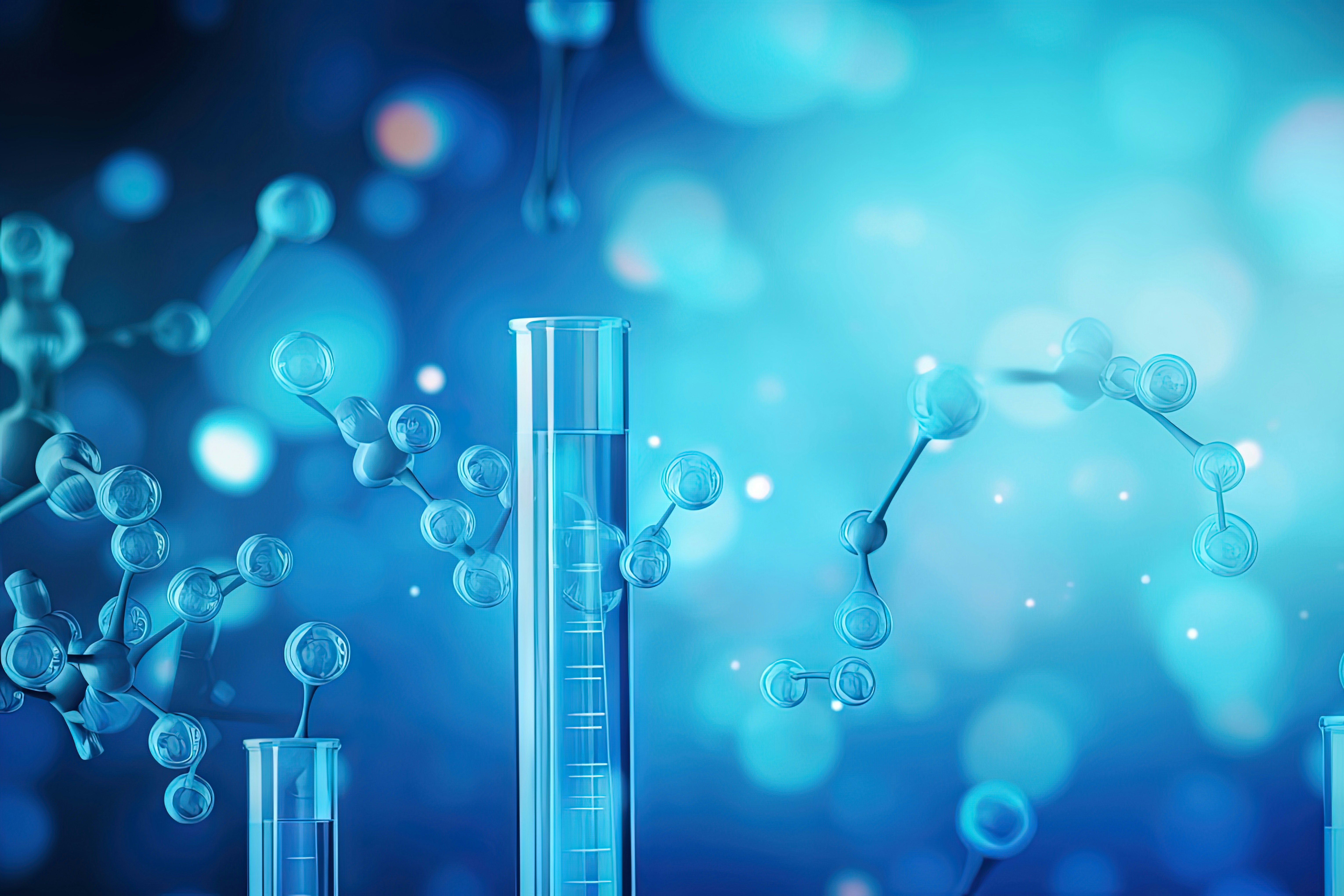Protein synthesis is an essential component in the manufacture of biopharmaceuticals and synthetic biology products. Methods like recombinant protein production use cells as miniature factories, while cell-free protein synthesis (CFPS) leverages extracted cellular machinery for direct protein production in the lab.
However, producing proteins at optimal yields is only half the battle. The real challenge often lies in purification—isolating the desired protein from a complex mixture of other biomolecules. Despite established methods, protein purification remains largely an empirical process, where success hinges on understanding the interplay of various factors.
The protein purification process
Regardless of the synthesis method used, protein purification typically involves column chromatography. This technique separates proteins by passing them through a column filled with a stationary phase, which selectively retains the target proteins while other substances pass through (Figure 1). The key steps include:
- Cell Lysis: Protein purification begins by breaking open cells to access their internal components. This process can be chemical or physical[1].
- Binding to the Matrix: The cell lysate is passed through a column, where the matrix binds the target proteins whileallowing unwanted materials to flow through.
- Washing: Wash buffers are next applied to remove non-target components, refining the purification[2].
- Elution: The target protein is released from the matrix by altering buffer conditions, typically involving changes in pH or other properties.
- Quantification: The concentration and purity of the purified proteins are measured , often using techniques like Western Blots or fluorescence-based methods.

Figure 1.
Challenges in purifying synthesized proteins
Protein purification presents significant challenges, particularly when scaling up for commercial production. Critical factors influencing success include:
Cell lysis variability
The process of cell lysis is not a one-size-fits-all approach; it must be tailored to the specific protein and production method in use. For instance, recombinant proteins can become insoluble aggregates, known as inclusion bodies, within the cells that complicates protein purification. To address this, solubilizing agents like urea or guanidine hydrochloride may be required to keep the proteins in solution[3]. Additionally, the lysis method—whether mechanical, enzymatic, or chemical—can influence the purity and yield of the target protein. For example, high-pressure homogenization is effective for large-scale lysis but may also shear proteins or cause unwanted proteolysis, complicating downstream purification[4].
Chromatography considerations
Chromatography remains a central technique in protein purification, but its effectiveness hinges on important decisions around affinity tag selection (Figure 2) and column resin packing)[5]. For example, a histidine tag (His-tag) is commonly used due to its simplicity and effectiveness in binding to nickel or cobalt resins. However, improper packing of the resin can lead to uneven flow distribution, reducing binding efficiency and, ultimately, protein yield[6]. Furthermore, the choice of buffer is crucial; slight variations in pH, ionic strength, or detergent concentration can destabilize proteins or alter their binding affinity, necessitating extensive buffer optimization to maintain protein integrity throughout the process[7].
Scaling issues
Transitioning from bench-scale to commercial-scale protein purification involves more than just increasing volumes; it also requires a comprehensive re-evaluation of process parameters[8]. For example, while a small-diameter column might work efficiently in the lab, scaling up to a larger diameter can introduce challenges such as uneven flow rates, increased pressure drop, and inefficient resin utilization. These factors can lead to variability in protein recovery and purity. Additionally, scaling up often requires adapting the process to different equipment, which might not replicate the conditions of the smaller-scale process, Failure to replicate these conditions can lead to discrepancies in protein quality and consistency. Therefore, careful optimization and validation are essential to ensure that the scale-up does not compromise the efficiency and reliability of the purification process.

Figure 2.
Solving protein purification challenges with advanced computational tools
Protein purification can be a challenging process, especially when preparing proteins for further use in research or therapies. However, many of these challenges can be addressed by using a well-planned approach that includes advanced computational tools and artificial intelligence (AI).
1. Using bioinformatics to understand proteins
Understanding a protein’s structure and function is essential for purifying proteins properly. Bioinformatics tools help with this by analyzing proteins in detail and identifying key features that can impact purification. For example, these tools can predict how a protein might fold[9] or where modifications might occur[10]. Knowing both can help in choosing the best methods to isolate a protein. Additionally, bioinformatics can guide the selection of affinity tags, which are crucial for separating the target protein from other substances.
2. Improving protein recovery methods
The process of moving from protein production to purification involves many factors that can affect the final yield. One common issue is the formation of inclusion bodies—clumps of misfolded proteins—especially when producing proteins in bacteria like E. coli[11]. These clumps need to be carefully dissolved to keep the proteins intact. Using gentle detergents or other agents can help break down these clumps without damaging the protein, improving overall recovery[3].
3. Analyzing protein production
Different systems used to produce proteins, whether in a lab setting or using living cells, can lead to variations in how those proteins behave during purification. While some models can predict protein yields during production, similar tools for purification are still being developed[12]. These models could help anticipate how different proteins will respond to changes in purification conditions, such as alterations in buffer solutions or column setups.
4. Enhancing purification with machine learning
Machine learning is becoming increasingly important in biomanufacturing, including protein purification. By analyzing data from purification processes, machine learning can identify trends and suggest adjustments to improve outcomes. For example, AI could optimize buffer compositions in protein production or adjust parameters like column size and flow rates during purification, helping to achieve higher purity and yield[13].
In conclusion, while protein purification remains a complex and often challenging part of protein production, advancements in computational tools and machine learning are paving the way for more efficient and reliable methods. By integrating these technologies, the biopharmaceutical industry can achieve higher yields and better consistency, ultimately enhancing the development of novel therapeutics. As these approaches continue to evolve, they hold the potential to revolutionize protein purification, making it more streamlined and adaptable to a wide range of applications.
Unlock innovation with the Tierra Protein Platform
The Tierra Protein Platform is dedicated to simplifying and optimizing the protein purification process after synthesis. By leveraging proprietary cell-free expression systems, Tierra has already enhanced production for specific protein classes. Now, we are expanding this capability by integrating machine learning to further refine purification protocols, ensuring that proteins are purified efficiently and with the highest quality. Unlock the full potential of your research—input your protein sequences into our easy-to-use ordering portal or contact us to discover how our tailored protein production solutions can accelerate your projects.




